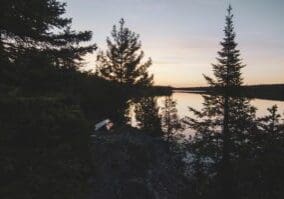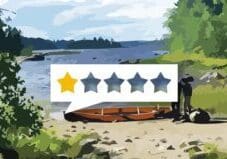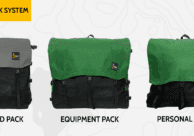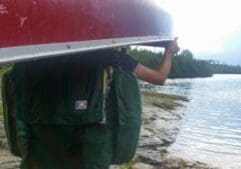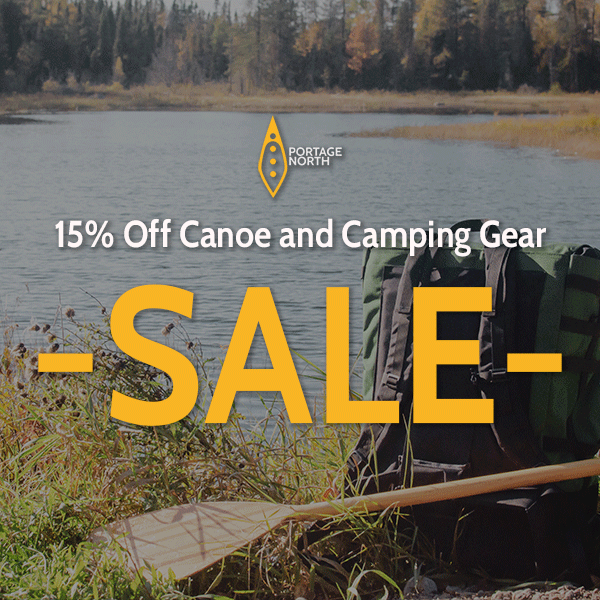Sign up for our newsletter to receive updates about new articles, great deals, and information about the activities you love and the gear that makes them possible:
Have You Read Our Other Content?
The Twenty Greatest Rivers and Streams of the BWCA
What makes something great is often a subjective matter, one formed of comparisons and perspectives. Is it the large size? How about the incredible strength, power, or position? Is it the beauty or some other awe-inspiring attribute which draws admiration and respect. Take the Great Lakes as an example of many of these definitions. West…
Map Mondays – Week 4 – Bower Trout to Little Indian Sioux North
As part of our continuing series on the “route planning game,” we are creating routes using randomly selected entry points, exit points, and number of days to create unique and fun BWCA routes. This week’s randomly selected entry points set us up for a cross-BWCA trip. It’s a long, 10-night trip that covers most of…
Worst BWCAW Reviews – The Wilderness is NOT for Everyone
This time of the year, the itch for that perfect summer canoe trip begins to intensify as permits are pulled, routes are planned, gear is cleaned, and the days begin to lengthen! It’s also time to remember that for every person who lives and breathes their wilderness trips, there is another who writes theirs off…
How to Start Wilderness Winter Camping on a Budget
The wind howls around the steep rocky palisade displacing snow which softly blanketed the lichen-speckled crag the night before. The cold wind bites the face as the eyes turn upwards towards brilliant hues of pink and orange igniting the morning sky. The evening dark and long makes the dawn all the more magical. And with…
Map Mondays – Week 8 – South Kawishiwi to Moose Lake
As part of our continuing series on the “route planning game,” we are creating routes using randomly selected entry points, exit points, and number of days to create unique and fun BWCA routes. Let’s check it out! Total Mileage: 51 milesNights: 4Paddle Distance: 46.7 milesPortage Distance: 4.4 miles Day 1: Miles: 9.4Target Campsite: Kawishiwi River…
How to Pack for a Canoe Trip – The Three-Pack System
One of the technical ways flatwater canoe trips are packed differently than backpacking trips is in how to organize gear. In a backpacking trip, the gear in the pack often belongs to the person carrying it, with a few communal items like food or shelter divided between party members. The presence of a bulky watercraft to portage…
Gear Features: We’ve got your back(straps)!
At Portage North and Sundog Sport, we sell gear that we would want to use and that we can trust. In that pursuit, we are constantly improving our gear so that it can be more enjoyable to use, more trustworthy, and easier to make to a high standard. Much has changed since Portage North…
A Few Tips for Faster Portaging
“Anyone who says they like portaging is either a liar or crazy,” said Bill Mason, the legendary Canadian paddler and environmentalist, in his 1984 film Waterwalker. While there’s a gritty sense of satisfaction in carrying your entire camp over rocks, roots, and trees, for most paddlers portages are something to be completed rather than savored. And…
Emergency Communication in the Wilderness – 4 Things To Know Before Your Canoe Trip
If you’ve never been on a wilderness trip before, the idea of traveling beyond cell service, seemingly out of touch with the rest of the world, can seem daunting. The questions are many: How do we let concerned family members know where we are? Will there be any cell service? What if we need to…
The Route Planning Game
“Probably the best remedy for the canoe freak is map watching. Pouring over maps can often get you through the canoeless season when nothing else can. I recommend it highly. If you coat the maps with plastic, you can even use them as tablecloths, curtains, and all sorts of things. However, no matter what you…



